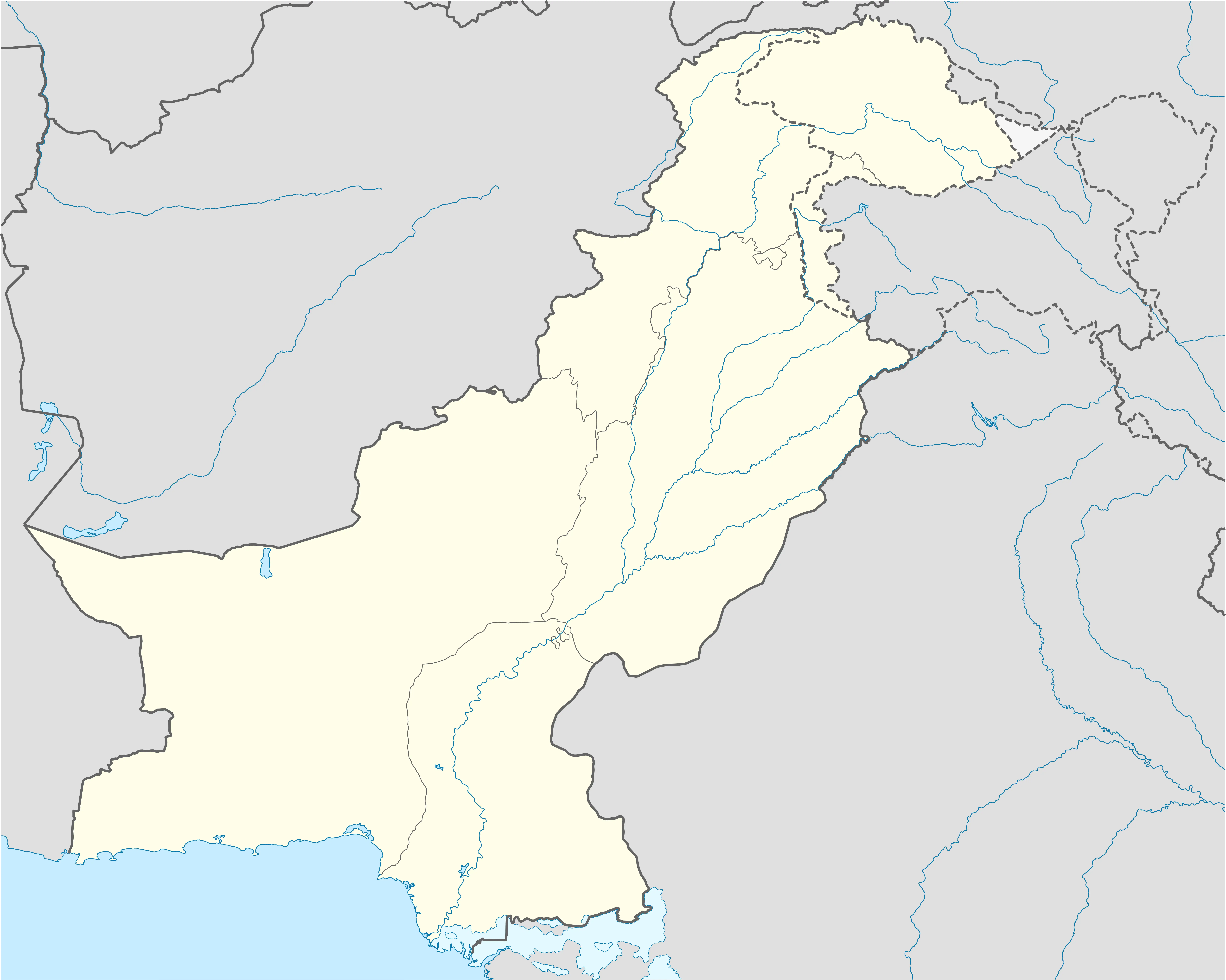Gor Khatri
Gor Khatri (Pashto: ګورکترۍ; Hindko and Urdu: گورکهتری) (or Gor Khuttree; literally meaning "Warrior's Grave") is a Mughal-era caravanserai located in Peshawar, Pakistan.[1]
گورکهتری | |
 A view over Gorkhatri | |
 Shown within Pakistan | |
| Location | Peshawar, Khyber Pakhtunkhwa, Pakistan |
|---|---|
| Coordinates | 34.0086403°N 71.5816924°E |

History
Gorkhatri in the ancient city of Peshawar was identified by Alexander Cunningham with the Kanishka stupa, the giant stupa of Indian King Kanishka the Great, while Professor Dr. Ahmad Hasan Dani identified it with the place where the famous tower of the Buddha bowl once stood.
The celebrated Chinese pilgrim Xuanzang, who visited Gandhara in the early 7th Century CE, had paid glowing tribute to the city and the Kanishka stupa in his memoirs. He also talked about a site, which many historians argue refers to Gorkhatri where "Buddha's giant bowl was kept".
Mughal Emperor Babar, who recorded its importance in his autobiography, visited the place in the Babur Nama[2]
In the early 16th century, Jahanara Begum, daughter of Mughal Emperor Shah Jahan, built a pavilion at the ancient site,[3] and converted the site into a caravanserai, and named it Sarai Jahanabad. She also constructed a Jama Masjid, a sauna bath and two wells inside Sarai Jahanabad for the convenience of travelers.
The Sikhs converted the site into the residence and official headquarters of their mercenary general Paolo Avitabile who was governor of Peshawar from 1838-1842.[4] They constructed a Hindu temple for Shiva there.[4] Prof. S.M. Jaffar, in his monumental book "Peshawar: Past and Present", identified it with the place of Hindu pilgrimage where they performed the Sardukahr ritual (shaving off heads).
Layout
Gorkhatri is a typical Mughal-era serai and is located on one of the highest points of Peshawar city. It is a fortified compound consisting of an area of 160x160 square meters. It has two prominent gateways: one in the east and one in the west. The Goraknath Temple is situated in the centre, a network of cells and buildings in the southern and western side of the complex and a fire brigade building, which was built in 1917.
Excavations
Dr. Farzand Ali Durrani initiated the first vertical excavations at Gor Guthrree in 1992-93 but his excavation work could not be completed due to lack of funds. However, he confirmed the city foundation went back to at least the 3rd Century BC.
The second round of excavations carried on until 2007 in the north eastern aspect of Gorkhatri pushed Peshawar's age by another couple of centuries, officially making it the oldest living city in South Asia.
Gallery
 Entryway to the site as viewed from the site's park
Entryway to the site as viewed from the site's park Hindu temple at the site
Hindu temple at the site Goraknath Temple Peshawar
Goraknath Temple Peshawar Old fire brigade
Old fire brigade Closeup of Gorkhatri's entryway
Closeup of Gorkhatri's entryway Plaque marking the former residence of Sikh-era General Paolo Avitable
Plaque marking the former residence of Sikh-era General Paolo Avitable
References
- "Within the Walls of Gor Khatri".
- Page 141 published by Penguin
- Elisseeff, Vadime (1998). The Silk Roads: Highways of Culture and Commerce. Berghahn Books. ISBN 9781571812223.
- Shah, Ibrahim (2016-07-02). "Hindu Iconography in the Gor Khatri Temple (Peshawar): Sacred Imagery Painted in the Śaiva Shrine". South Asian Studies. 32 (2): 185–198. doi:10.1080/02666030.2016.1218125. ISSN 0266-6030.
